The remaining wild and rural lands of Florida are dominated by working ranches and timberlands, which provide habitat for our wildlife and clean our water while also supporting our agricultural economy. Ranchlands are predominant on private rural lands south of Orlando, while timberlands are more extensive in the northern portions of the state – differences driven by the influence of fire on natural communities, and later reinforced by land use practices.
The dry prairie region of central and southwest Florida where many ranchlands now exist is unique in the southeastern United States, supporting a variety of plant and animal species including the federally threatened caracara and the endangered Florida grasshopper sparrow. In the 1800s the region became dominated by open range cattle operations that evolved over time into the ranchlands we see today. Although these ranches resulted in conversion of much of the former dry prairie landscape to pasture uses, many of the species characteristic of the region still inhabit the vast open grasslands on these ranchlands. Further north, much of the natural pine flatwoods landscape was converted to more intensive silvicultural operations, predominantly with the same or similar species of native yellow pine. These timberland operations have a wide range of management intensities, but in general they still harbor many of the species found in the former flatwood and upland pine communities that once dominated most of north Florida.
The Florida Conservation Group works with scientists, landowners, and policy experts to apply the best available science to the conservation of working landscapes in the state of Florida. We educate and act as a resource on conservation programs to protect the working landscapes that are critical for maintaining the wildlife and water resources of our great state.
The ranchlands and timberlands map shows the extent of these working timber and ranch landscapes in Florida.
Click here to enlarge map.

There are some exceptions to the general landscape trends described above, including in the Suwannee Valley in north Florida, which has a long history of more intensive forms of agriculture that started in the mid-1800s. Some of these agricultural operations have been converted into pine plantations as the economics of some crop types have changed, but pasture has also persisted as a land use in the region. North Florida is also home to some ranches and plantations that manage for timber, cattle, and hunting, including in portions of the Red Hills north of Tallahassee and areas around the Suwannee River.
